River Trent Carbelling and the Zen of “Carbology” Part 1
Carbelling: The fusing of barbel fishing and carp fishing
Carbology: The science of catching barbel using techniques evolved from those used in the carp fishing fraternity.
Carbologist: One who involves themselves in the science concerned in catching the aforementioned fish using the aforementioned tactics yet all the time trying to push the boundaries of the sport and extend their scientific knowledge of the prey.
This is the first in a series on River Trent Carbelling and the zen of Carbology. The effective methods I use to catch barbel ( and other species) on the River Trent and other large rivers.
Me and my good mate Dan Stewart-Smith have had a fantastic session on the tidal part of the river Trent earlier in the season We bagged up big time on Barbel, Bream, Chub and all manner of other species ( so much so we got a mention on the front page of angling times!) we even thought about trying to catch ourselves a flounder. You see we have an advantage over many anglers when it comes to catching a few fish and that is we have an open mind. We will switch hit and swap like Rocky Balboa but at the core of our attack is “Carbology”.
“Carbology?” what the hell is fat-boy blathering on about now I hear you say? Well let me explain to you. Carbology and Carbologist were terms that I myself light-heartedly came up with several years ago when writing an article for Fishingmagic.com, they refer to the mindset and methods involved in “Carbelling”.
Carbelling is a term however I cannot take credit for, that was first used to the best of my knowledge by Bob Roberts in a talk to the East Midlands Barbel Society many, many moons ago(My term for the Carbelling style in the early days was “Barping”…I was Barping mad…Not much has changed!).
Love it or loathe it “Carbelling” is now a mainstream method for catching barbel from big rivers where more orthodox methods would simply be too much like hard work or just not viable.
What methods would I include in this category you may ask…? Well there are legions but I will mention only three as this article would soon become a book!
Touch ledgering a lump of meat along a gravel strewn river bed for barbel is a wonderful method and one I have used a lot in the past to catch some massive bags of fish.
However, that said I only ever used it in a few swims on the Trent simply because of the snaggy nature of the river, I hate leaving tackle connected to snags so this has only ever been a fringe method for me.
Maggot feeder with ultra-short and ultra-long hooklengths has caught me so many barbel and chub over the years that I couldn’t honestly guess their combined weight but it would be in the tonnes (and lots of them).
but maggots are no longer cheap, they are tricky to store correctly and they have a habit of escaping and causing all manner of embarrassment as they hide themselves away hatching in Luftwaffe sized squadrons to swarm through the house (car, shed or mother-in-laws kitchen) in blitzkrieg formations…No, not for me any-more is the scrabbling around at 3am hoping to God that I have got them all before the wife gets up for work only to see another five dozen little red army soldiers sticking their blunt bottoms out of the carpet.
Maggots for me are now bought and kept in batches of less than two pints and purchased on the day of use and disposed of thereafter. (Bigger batches are used occasionally at the back end of the season but only after serious consultation with a bank manager and those too never make it indoors) One Kick in the clangers from a Tai-Kwon-Do black-belt wife is plenty enough for me thank you very much!
Trotting with and then “batting back” an Adcock Stanton, Chris Lythe, Okuma (insert the reel that best fits your pocket) centre pin all day is one method I have almost no experience with..
but I am sure it would bring me a load of fish if I persevered with it. I can see a lot of success coming as if I was to repetitively send down my swim a big fat crow quill float that is suspending a huge bunch of casters (I use casters again like maggots…Only after monetary consultation from an accredited financial advisor).
Long trotting over a constantly replenished bed of hemp is a truly magnificent way to fish and it is something I plan on doing more of at some point in life…I promise…But bloody hell it would be hard work and would more than likely leave me with a case of ” bankers” cramp like nothing I have ever experienced, well not since I first went on holiday to Greece and discovered Swedish females topless sunbathing for the first time. I was wearing that wrist brace for six months afterwards.
However unlike the three methods mentioned above basic Carbelling tactics are very easy to get to grips with and are what I would call “low maintenance methods” in so much as the angler has time away from the rods to sit and contemplate his or her next move in regards to getting fish to bite.
That being the case, it is irrelevant whether the purists amongst us or those nasty people of the barbel police approve of Carbelling tactics or not, as it is a style that naturally appeals to those amongst us that enjoy a more cerebral and sedentary (Some would say “big assed fries” lazy) approach to fishing.
Therefore like it or not Carbelling and Carbology are here to stay even though some aspects of Carbelling such as the “Bivvying up” and the “Season long sessions” can get right up peoples noses when abused there really isn’t much that can be done to prevent the styles proliferation on the long term…Committees get older and die and angling mindsets change.
And that being the case it is futile to try to prevent anglers from following a path they believe to be the most direct route towards a successful big-fish campaign on a large river like the Trent but some clubs and societies are still trying to halt the march of the Carbeller’s with draconian rules and regulations aimed at pushing out the tent dwellers in favour of the match monkeys, pleasure muppets and the floppy hatted ones…
Do you see what I have done there? I have categorised anglers simply by their approach to fishing…Only an idiot would do that because only an idiot could fail to see it is these divisions in angling that are our greatest weakness and those that cannot see this simple fact are our greatest handicap…
We anglers should all try to follow the adage of “live and let live” and following on in the ethos of that adage I recently found an old Coarse Fisherman magazine in which Bob Robert defended the barbel anglers rights to use the methods involved in Carbelling but stated that he felt it was a “Hopelessly inefficient way of barbel fishing”.
Well I too would also defend the rights of those barbel fishermen that choose to go Carbelling but would have to disagree with my good friend Bob and his “Inefficient” comment. In fact I believe it may have been inserted deliberately to provoke discussion.
So lets us discuss some of the drawbacks, merits and methods involved with Carbelling.
Question: “Is Carbelling inefficient?”
Answer: “Absolutely not!”
How can a method that routinely bags massive hauls of fish week in week out be classed as inefficient? Obviously it cannot. Fishing for Eels in far flung Lincolnshire drains using lambs wool dipped in sour pig’s blood is inefficient (Yes, it is a real method and it’s called “bapping”)
But If I was asked the question “Is Carbelling selective?” then I would again have to say “Absolutely not!”
Carbelling is a fusion of styles and methods used for two not dissimilar fish and therefore it incorporates feeding regimes, rigs and baits that will appeal to both species but at the same time also pick up what are termed as nuisance fish such as bream, roach, chub and eels.
Now these are only nuisance fish (excepting the Eels…They need to take some Prozac and calm themselves down a bit) to the basic “Carbellers”, to the enlightened “Carbologists” they are the “trigger fish” and the “dither fish” and they are vital to ensuring a good sessions sport.
I have many theories on what will trigger fish to feed, some I will keep to myself as I do like to have an edge over everyone else but I will say that fish have very highly developed senses that pick up changes in water pressure and electrical current (I will not go into the audible crunching again as I have done that to death…And have already been proven to be correct…I love being a genius)
Ok, so fish pick up changes in pressure?
“Big deal!” you may think…How will that help me catch more fish, you may ask?
Well the answer is subtle but quite obvious…As the fish (plural hopefully…It doesn’t matter which fish species either) begin to feed they start getting exited, they begin moving with purpose and showing more and more feeding aggression, they either start flashing through the water levels like roach, dace and bleak would or they begin stirring up and shifting gravel and stones like carp, barbel, bream and to a lesser extent chub would and as the fish thrashes around it is not only creating an audible signal that travels extremely well it is also displacing water and giving off pressure waves (Try it in the bath!) these vortexes and waves of pressure are also easily picked up by the lateral line of all nearby fish.
And as the fish begin to feed the very same thrashing and moving with purpose that creates the “pressure waves” also alters the amount of electrical activity within their muscles and as everyone knows water is a pretty good conductor of electricity and these erratic but tiny changes in ambient current are also picked up by any nearby fish.
These are what I consider to be blatant “triggers”
These signals tell nearby fish that are in a state of inactivity that “Something is going on” and that they should prepare themselves in a similar way we humans would prepare ourselves for “fight or flight” fish I believe tend to go with the “Feed or Flight” choice of reactions.
And what will swing the balance in their choice of feed or flight?
Dither fish will…What on earth are dither fish you may well ask?
Dither fish is a term I stole from tropical fish keeping and they are the fish that would take flight if there were any safety issues such as predators in the vicinity.
We as angler may not give any merit to the angling value of a shoal of 2oz roach or a million tiny minnows but to a barbel they are the health and safety executive, the sentries that will scatter and flee if there is anything amiss and the more dither fish we can hold at ease and feeding in an area the more at ease our prey will become.
so how does the carbeller/carbologist maximise his chance of catching?
By maximising the amount of positive triggers he uses in his search for success and successfulness comes by using whatever pieces of equipment, baits or methods regardless of where they may come from and whatever their original purpose was intended to be just so long as the angler deems them fit to utilise in his search for the most efficient presentation of maximum triggers.
I mean does anyone actually think that PVA was invented by carp anglers as a method of getting bait around our hooks?
PVA was invented to bag up shit stained laundry in prisons and hospitals so that it could be lobbed into the washing machine in a hygienic manner…”No!”, you say PVA was made for anglers!
Jesus Christ ! You will be thinking that Nylon was invented by fishermen next and that carbon fibre was developed for rod building…Don’t be daft!
Most of the really famous Carp anglers couldn’t even tell you what PVA stands for in fact some couldn’t even spell PVA and anyway who amongst them actually cares they are usually far too busy trying to get a good reception for SkySport1 whilst at the same time hoping the single bleep they got on the left hand rod last week develops into a run before they have to go and sign on…Unfortunately for the carp boys and girls the 120 acre water they are guesting on which only has 3 carp in it…Is now devoid of carp as they were harpooned by polish mussel divers just before they arrived last week.
Nylon was created by Wallace Carrothers, an organic chemist who worked for DuPont and probably never wet a line in his life, he certainly wasn’t a roach angler that didn’t like using spun silk and cat gut!
We should also not forget that that Dyneema fibre was not invented solely for the purpose of anglers by anglers?
No, all the things we consider intrinsic to angling were all “sourced” as useful and utilized by small group of “Thinking outside the box” entrepreneurial type anglers that yearned to make “money”.
I could say that they yearn to make their presentations more efficient because basically he who stands on the shoulders of the most giants and learns from the successes and failures of most anglers will gain the most success in angling.
But the true edge of the edge types brought in new technology to make money
However we should always remember that it is irrelevant who developed what and for which species, we are all anglers, it is all fishing and they are all fish (Except Eels which are not fish and are not spawned in the Sargasso Sea but are in fact the lost pubic hairs of Satan himself…They are the destroyers of rigs and the harbingers of all things covered in snot)
And Carbellers are the type of angler that will go out and get what they need to use, what they feel will make them more efficient, be that chemical mineral or vegetable and that is why I will always consider Carbelling to be an effective and efficient method for catching barbel ( as well as other species) from our larger waterways.
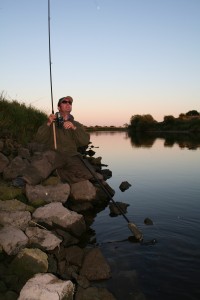
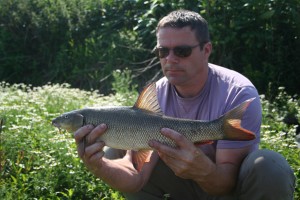
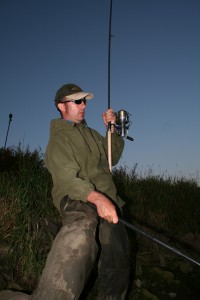
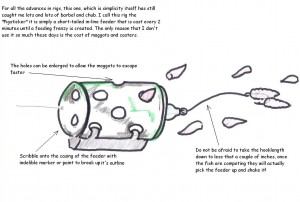

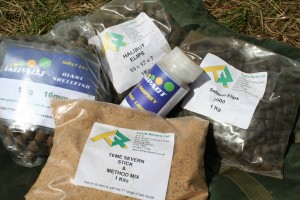
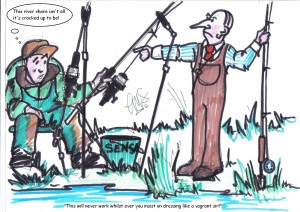
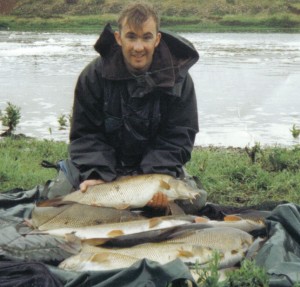
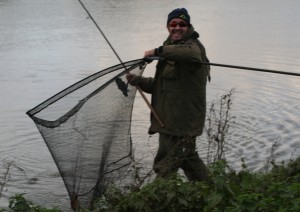
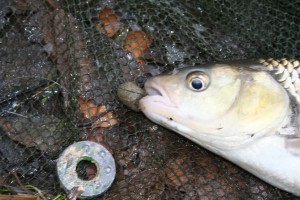
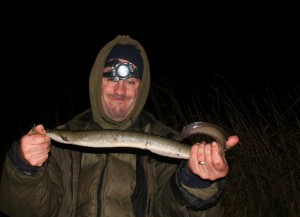
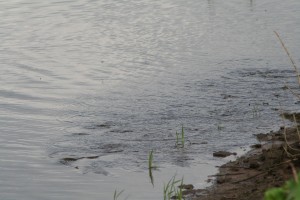
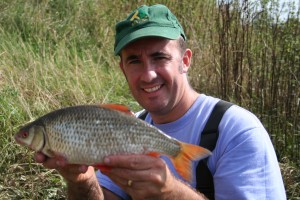
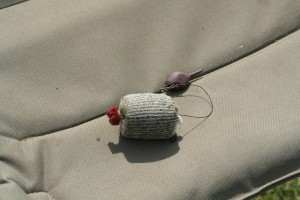
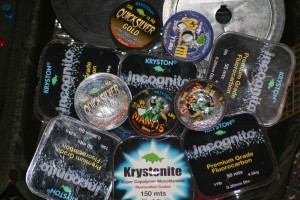

I love it when I aint been catching and the bream show up as the barbel wont be far behind
its dead on certain they won’t miss a free feed!
Carbelling or barping not sure which it is I do but it catches me fish! But does this mean I have to get rid of my floppy hat?
Seriously though it’s a matter of choosing the right method for the water.I fish very differently on the Dorset Stour than I do on the Trent around Newark.
No one method is right or wrong but finding the right one on any given day is what makes an angler a better angler.
Bit of a rant, sorry …
Guys filling the Trent in with so much bait = Carp / Barbel guys
( bollies, pva bags full of more crap ) are killing the job.
I am one of those anglers who catches good fish often, but never fish within site of other anglers if I can help it. I like to keep under the radar. Why ? …. because the internet, blogs put the fish under so much pressure these days. I log all my fish but have no desire to put the fish I catch under any other pressure. In fact I fish elsewhere after a good few sessions. I have just rested a fantastic little spot I have found where the Pike go in Feb / March ( 67 fish in 5 visits ) … not fished it now for 3 years, I am back this winter.
I remember a day on the Trent, two guys Barbel fishing ( X-Carp ) had been there four days, they told me they had filled it in with bait and had only one 4Ib barbel. ( They were round a bend so could not see them or would have gone elsewhere ).
I fed the way I always do and sat patiently, first bite 2 hours in, four hours later 5 Barbel to 10Ib 2oz. I could see them heading up bank so I put away my gear.
Hey up mate, what yer got them on, what rig, we heard the splashing but didn’t hear any buzzers go off… straight bomb, BREAD FLAKE I said, it was a lie.
Never been back. How come everyone copies everyone else and goes to the same hammered places. No wonder fishing is shagged along with most venues.
How come most want their photo on the internet holding a fish, do they just want their ego boosting.
I find it amusing when some don’t name venue then in the background of photo, those who know can see where they caught it anyway ( in a place I wouldn’t be seen dead at, worn out grass, litter but more so, a short walk from their vehicle ).
Pike fishing is the worst, I love Piking but it seems to attract a few morons. They think wrongly Pike are tough for eating other fish. It is what they do to survive, but they don’t eat what matchmen think they do, nature tends to balance that out. I hate when a see a gang of beer swilling louts fishing for Pike with none of the right gear to land the fish, or more importantly handle the fish carefully and return it. Then leave with a trail of shop-bought deadbait packets on the bank.
A Pike is a very delicate fish, handled the wrong way or even held up for a ‘trophy photo’ the wrong way can cause it to die.
Anyway had my rant …
NICE RANT!!
10/10
Take a bow